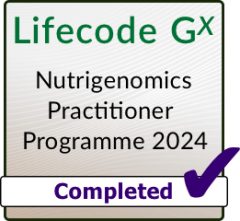It may come as a suprise that Vanessa has been baking with sourdough for over four decades, but she began as a little girl in south west France.
Over forty years ago, a young Vanessa fell head over heels in love with the bread she was served in the local village restaurant in the Dordogne. This simple passion led her to train as a baker; but it was when she stopped being able to digest industrial bread that she embarked on a lifetime of research to discover why, on the other hand, she could digest sourdough. The Sourdough School as we know it today leads the way in the application of the most up to date research to bread making.
When Vanessa was nine, her parents bought a house in rural south-west France. Vanessa’s Italian mother loved good food and was a senior chef at Keele University. Both her English grandmother and Italian great-grandmother were bakers, and the house she now lived in was just 60 yards away from the thriving rural French village bakery. The bakery supplied all the bread for miles around and was right the heart of the community. This little girl fell in love with everything French – the wine, the cheese, the fresh fruit and vegetables, the farmers, and the local markets. But most of all she fell in love with the bread. She didn’t even know the word for bread in French, but she fell instantly in love. “I made a connection that will last as long as I breathe.” She bought bread every day and learned a new word each time until she had enough words to ask if she could stay and watch. Every morning at 3 am she would creep down two flights of ancient wooden stairs, climb out of the window and run down the alleyway in the pitch black to the bakery.
Vanessa is an enthusiast, a delighter in life’s most civilised pleasure, and a grown-up who’s retained a child-like wonder at the mysteries of the world.’
–Sheila Dillon BBC Radio 4 Food Programme
She ran as fast as her legs could because only the light of the moon lit the way, but her love of the bakery was stronger than her fear of the dark. As she ran into the square, the bakery oven was lit. The air was cool and filled with the smell of oak burning, and she never slowed down until she was right inside the bakery. The bell on the door would ring furiously as she knew once she was inside the warm brightly lit bakery she was safe. As the years rolled on nothing changed. Every holiday, at every chance, she’d work on the bakery. Sweeping the floors, serving the customers, cleaning and helping to make the bread, she spent every spare moment there. It was in this rural community that she really connected to farmers and the land, and to the relationship between food and family and community that was right at the heart of French living. Aged 18, she qualified as a baker and a chef in the UK, but there were no ‘real’ bakeries.
Apprenticeship in France
In 1992 returning to France, she worked in a restaurant in Paris for a summer and then as an apprentice baker in the Dordogne. Returning to the UK, Vanessa worked as a baker and chef in a hotel in Leicester whilst at university and completed a degree in Psychology of Human Communication. It was whilst finishing her degree in 1995 that she became poorly, and was given a strong dose of antibiotics called Metronidazole. It was one of a long list of antibiotics that destroyed her gut microbiome and, to her utter dismay, she stopped being able to tolerate wheat. It made her ill and she had no option other than to stop being a baker. She gave up the thing she loved most.
She gave up the thing she loved most – bread and baking.
For over 4 years she avoided all wheat until she returned to the bakery and was given some warm bread by her friend. Unable to resist, Vanessa ate the bread and discovered that she could digest sourdough without issues. When she returned home she ate ordinary commercial bread and was poorly again. This was a pivotal moment and she set out to try and understand why. The doctors she spoke to didn’t have answers; neither did the nutritionists or bakers. She was told she had a leaky gut and so this set a new path: to understand the role of fermentation and how the long slow fermentation eased the digestion of bread.
The missing piece of the puzzle
In 2016 as part of researching into the microbes in her sourdough starter, she discovered through tests by Tim Spector that she had an extremely low microbial diversity. The results showed a microbiome that was disturbingly unhealthy, with less then 1% diversity, despite Vanessa’s diet being diverse and fibre-rich. Vanessa’s gut microbial diversity was comparable to, if not worse than those found in autistic children. She was left with 69% Bacteroidetes and 29% Firmicutes, both microbes associated with obesity
Medical records showed Vanessa had been prescribed 57 lots of antibiotics
Getting hold of her medical records, she asked Dr Alison Coleville to list the antibiotics she had taken in her lifetime. As she read the results she burst into tears. Over her lifetime she had been prescribed a total of 57 Antibiotics, her first being administered when she was just 6 months old. Total antibiotic counts:
- Amoxicillin x 27
- Penicillin V x 11
- Erythromycin x 3
- Co-amoxiclav x 2
- Metronidazole x 1
- Cefalexin x 5
- Flucloxicillin x 5
- Doxycycline x 1
- Trimethoprim x 2
The timeline of Vanessa’s reaction to wheat tied in exactly with a strong dose of Metronidazole. This pot of tablets changed everything. Studies have now shown that antibiotic-induced dysbiosis is likely to influence numerous immune and metabolic outcomes through routes that affect the intestinal milieu’s overall inflammatory tone. In this regard, microbiota alterations can result in a decrease of IgA, a non-inflammatory immunoglobulin involved in pathogen and allergen exclusion (Rautava et al., 2004; Penders et al., 2007a; Cerutti and Rescigno, 2008). In addition, metronidazole has been shown to cause a decrease in the expression of Muc2, the major component of the mucin layer (Wlodarska et al., 2011); thinning of this layer would result in a more direct contact between gut microbiota and epithelium, with likely increases in innate immune stimulation and inflammation In Vanessa’s case it was likely the cause of her reaction to wheat and many other foods that were to follow. To make matters worse a nutritional therapist put her on a restriction diet to try and identify the offending foods. We now know that diversity of food is the key to nurturing microbes but for over a year, Vanessa was restricted to just a handful of ingredients, which contributed to the extinction of her microbes. The restriction continued for almost 5 years with multiple food allergies and intolerances.
Teaching The Doctors Baking as Lifestyle Medicine
Over twenty years on, Vanessa is internationally renowned for her passion and unique understanding of long slow fermentation. In many ways she came full circle, teaching the nutrition and digestibility of bread course to doctors and health care practitioners, accredited by the Royal College of General Practitioners. In 2009 she wrote her first book Prepped, and her next book Food for Thought won the World Book Awards for Most Ethical and Sustainable Book. It was also The Telegraph Book of the month. Her 3rd book, The Sourdough School, is a best seller on the subject of how to make nutritious and delicious sourdough. It was hailed as “the most important book of the year,” in 2019 by Waitrose Magazine. Next came Sweet Sourdough in 2020, and The 10 MInute Loaf in 2022 completed The Sourdough School trilogy. Vanessa is currently writing her 6th book which will be published in 2025.
Optimising our staple food for social equality
Once Vanessa realised that fermenting flour and water transformed it into bread that was not just delicious but digestible, she found herself on a mission to understand how and why sourdough is easily tolerated by people with digestive issues and why is it so important to eat bread that is nutritious. “Feeling poorly changes everything. It changes the way you feel. I realised that when I ate long slow fermented bread created from the flour blends that I mill, along with other fermented wholefoods, I felt better. Not just physically but mentally. As I began to teach, it became obvious that the kind of bread people eat every day was integral to health and my focus stopped being about me. I do not think you can underestimate the importance of the way we approach bread, and the impact on health, given that wheat makes up between 20-30 (depending on socio-economics) of calories consumed by humans. My life’s work is about understanding and sharing knowledge of how to make bread that nourishes. It has meant redefining our approach to flour and combining this with fermentation. Fermentation alone is not enough to change the paradigm of bread. It is a combination of the way we grow our grain, the diversity of the ingredients we use to mill our flour, the way we ferment our bread and the way we eat our bread that supports our health and our immune system. At the heart of my work is the belief that the transformation of flour and water into food that nourishes us impacts both our gut microbiome and our mental health. This is bread that nourishes and from this base we can bake, eat and share bread as lifestyle medicine.”


